





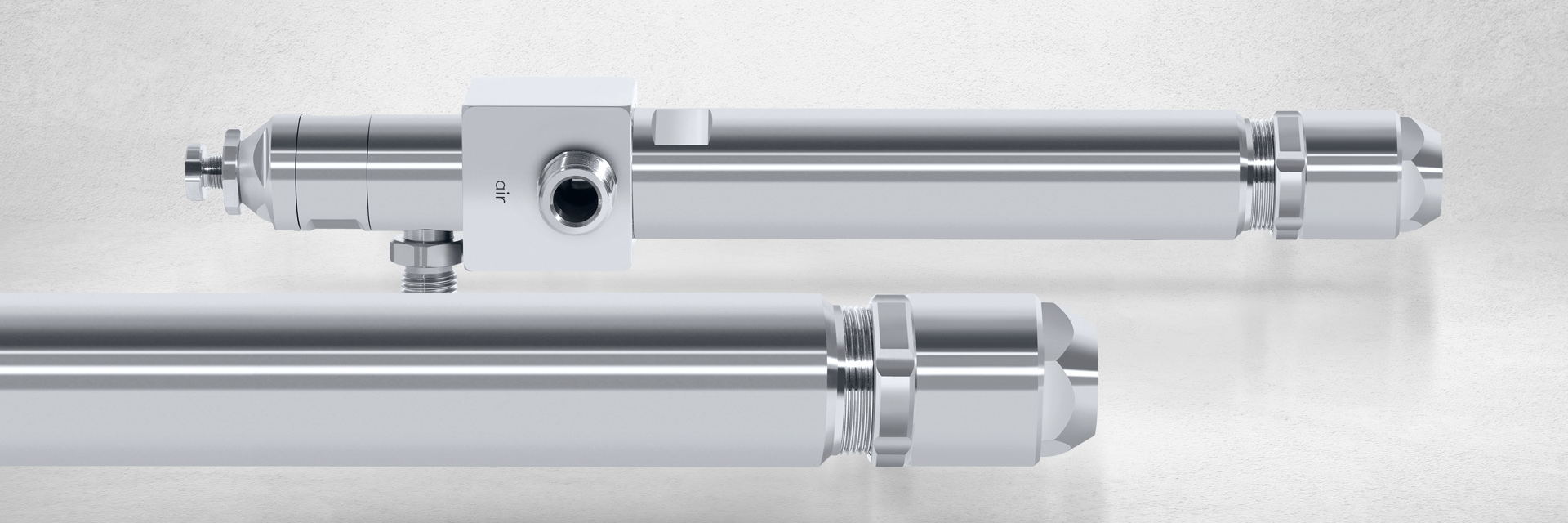
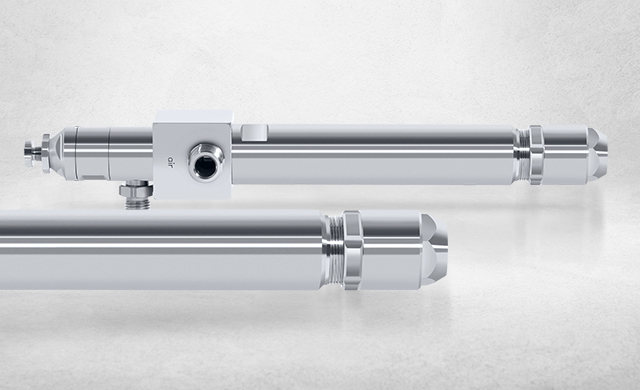
External-mix two-substance nozzles allow independent control of the flow rate and fineness of the atomization. The lance models allow very fine atomisation of large liquid quantities. The flow rate for all models is controlled through the liquid pressure difference. In the model with a regulating pin, the flow rate can also be regulated by the pin setting.
The SCHLICK model series 0/2-0/9 is manufactured using modular construction. This means that it can easily be rebuilt into other designs. Replacement parts are available for all individual parts and reproducible results are ensured. The spray is characterised by a high speed impulse of the droplets and a high local liquid pressure, especially at the centre of the spray.
Plug & Spray
The SCHLICK patented internal-mixing model can be updated by simply changing the air cap.
Materials: Acid-resistant stainless steel, heat-resistant stainless steel, titanium, tantalum, carbonide, hastelloy, inconel, other materials available on request.

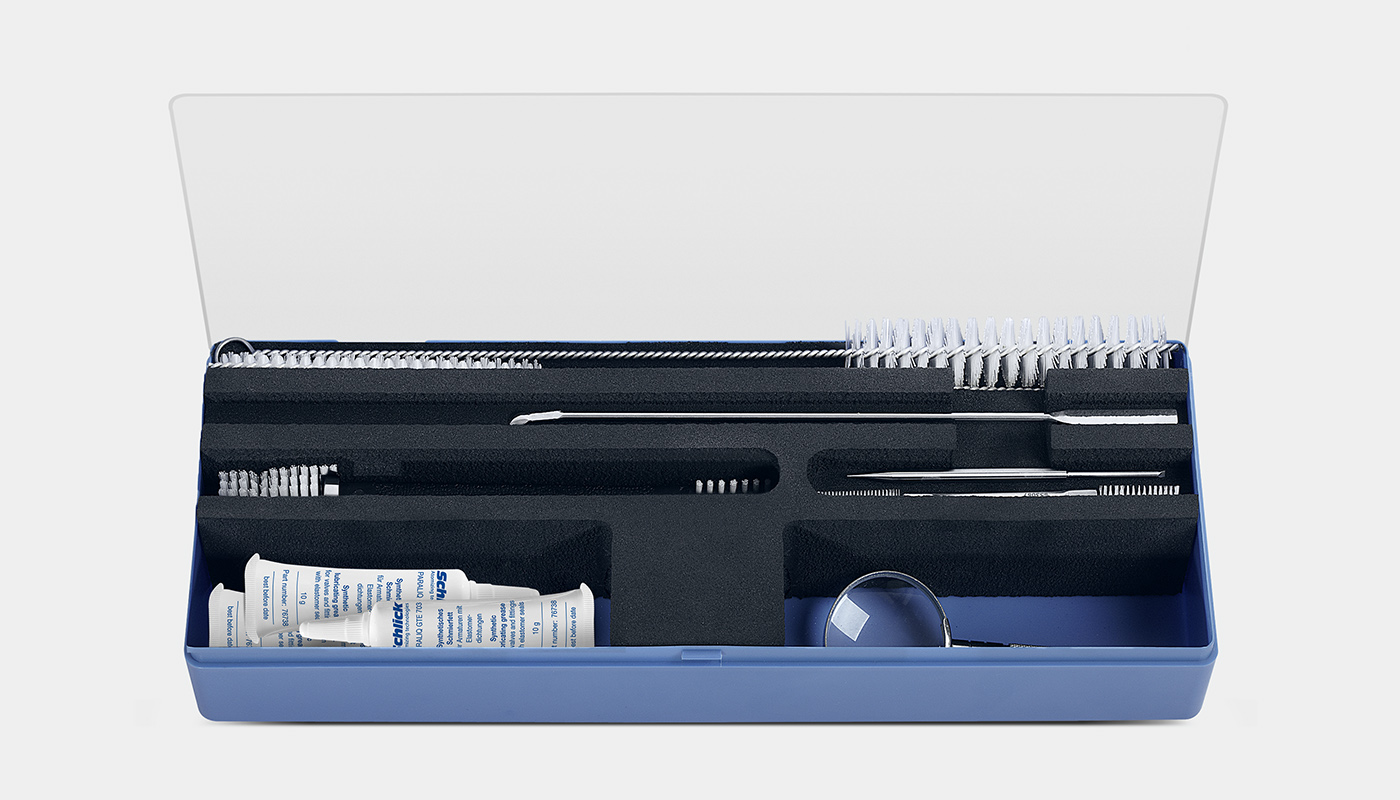
The SCHLICK cleaning set includes all necessary tools for preservation of nozzle parts
– 3 x brush (ø 8, 14 and 20 mm)
– 1 x double cylindric-brush
– 1 x o-ring-tool (stainless steel)
– 1 x spoon-spatula (stainless steel)
– 1 x thread-cleaningbrush
– 1 x magnifying glass
– 3 x synthetic lubricating grease
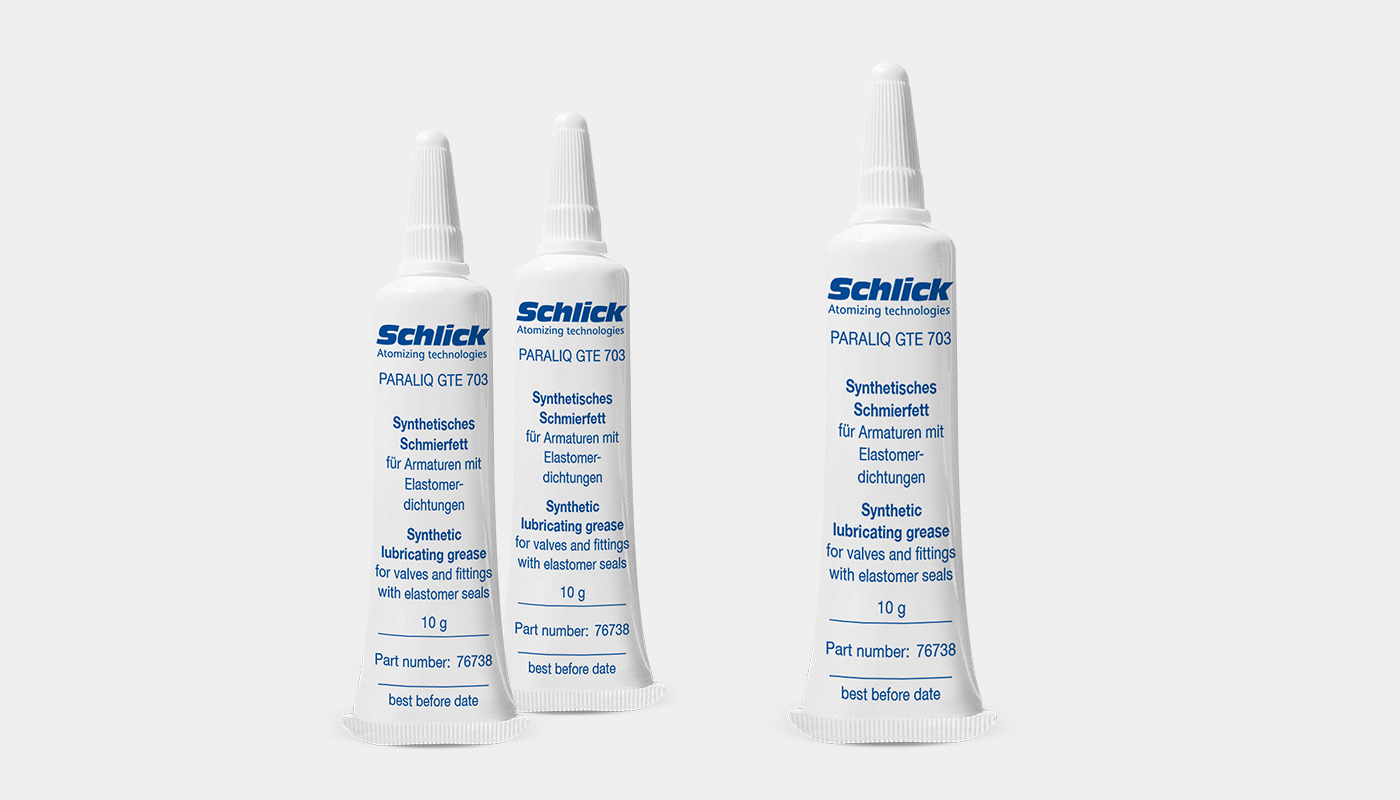
Synthetic lubricating grease
for valves and fittings with elastomer seals, compatible with EPDM and conforming to FDA. Can be dispensed in very small doses using special injection devices.


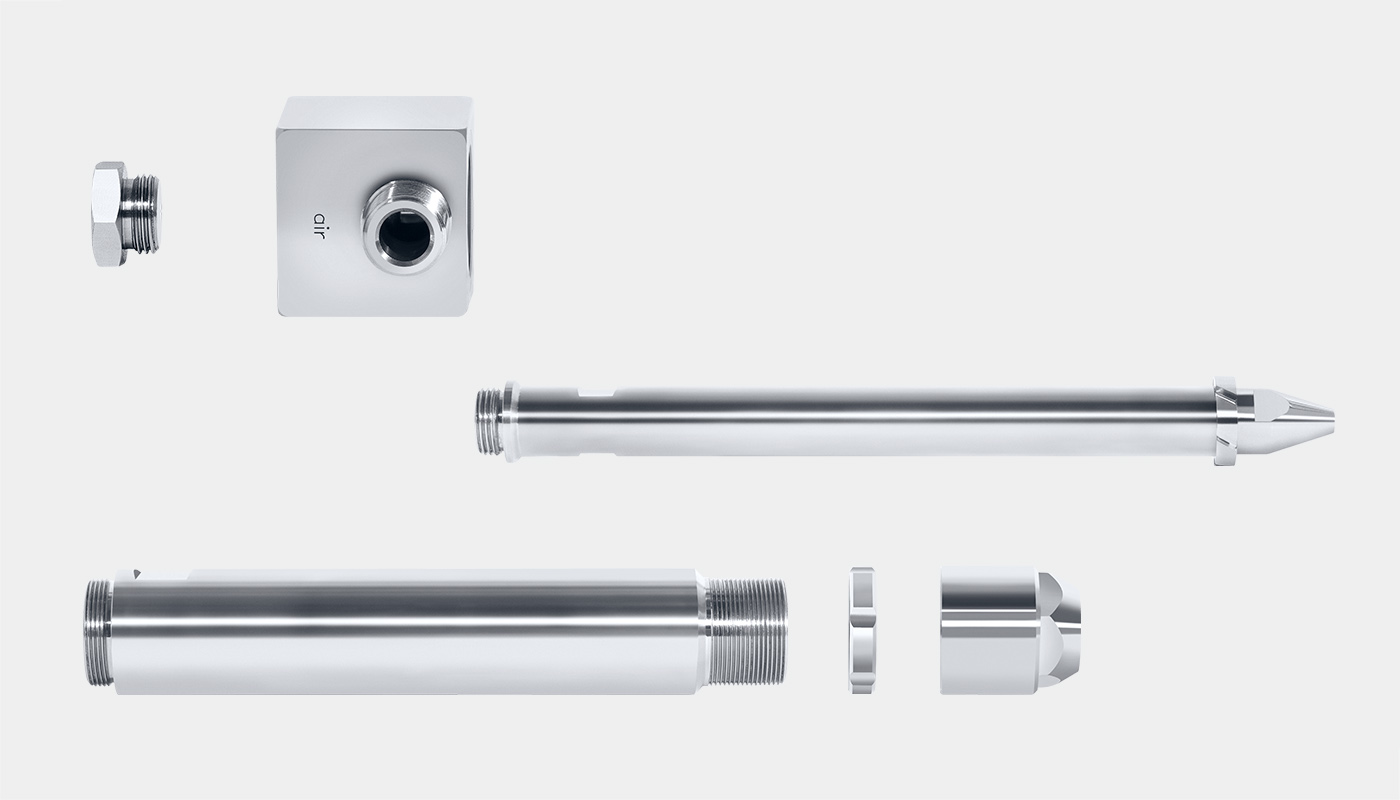
Form 0
Basic model with dummy plug. Designed for the atomisation of liquids that are either siphoned or fed by gravity at a slight gradient. For homogeneous distribution on large specific surfaces.
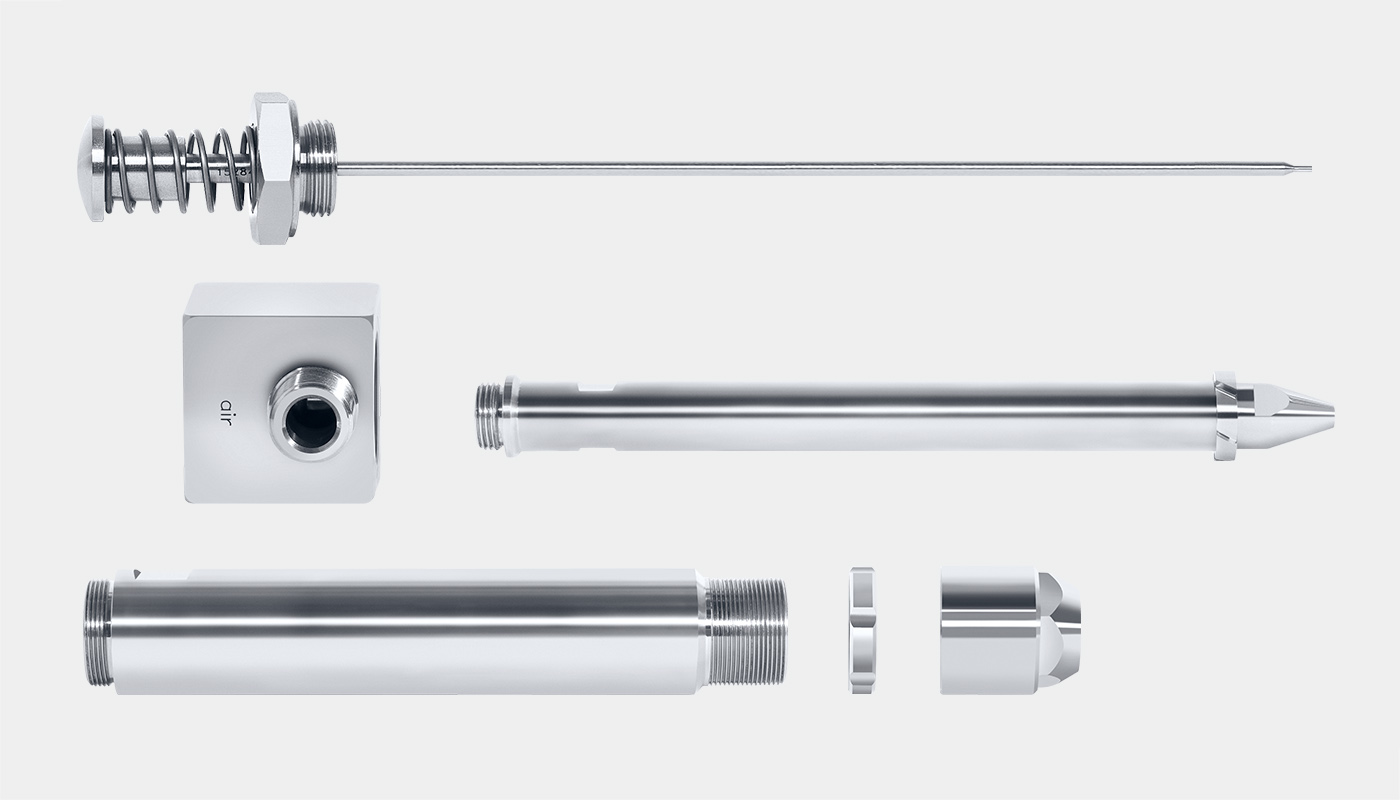
Form 3
Supplied with manual operated cleaning needle. For fast nozzle orifice cleaning during operation. Designed for the atomisation of sticky, impure, or highly viscous liquids, etc

Form 4
Version with a liquid flow control needle. This design is particularly suitable for applications or atomisation tasks with highly variable flow rates.



Plug & Spray: The SCHLICK patented internal-mixing model can be updated by simply changing the air cap.
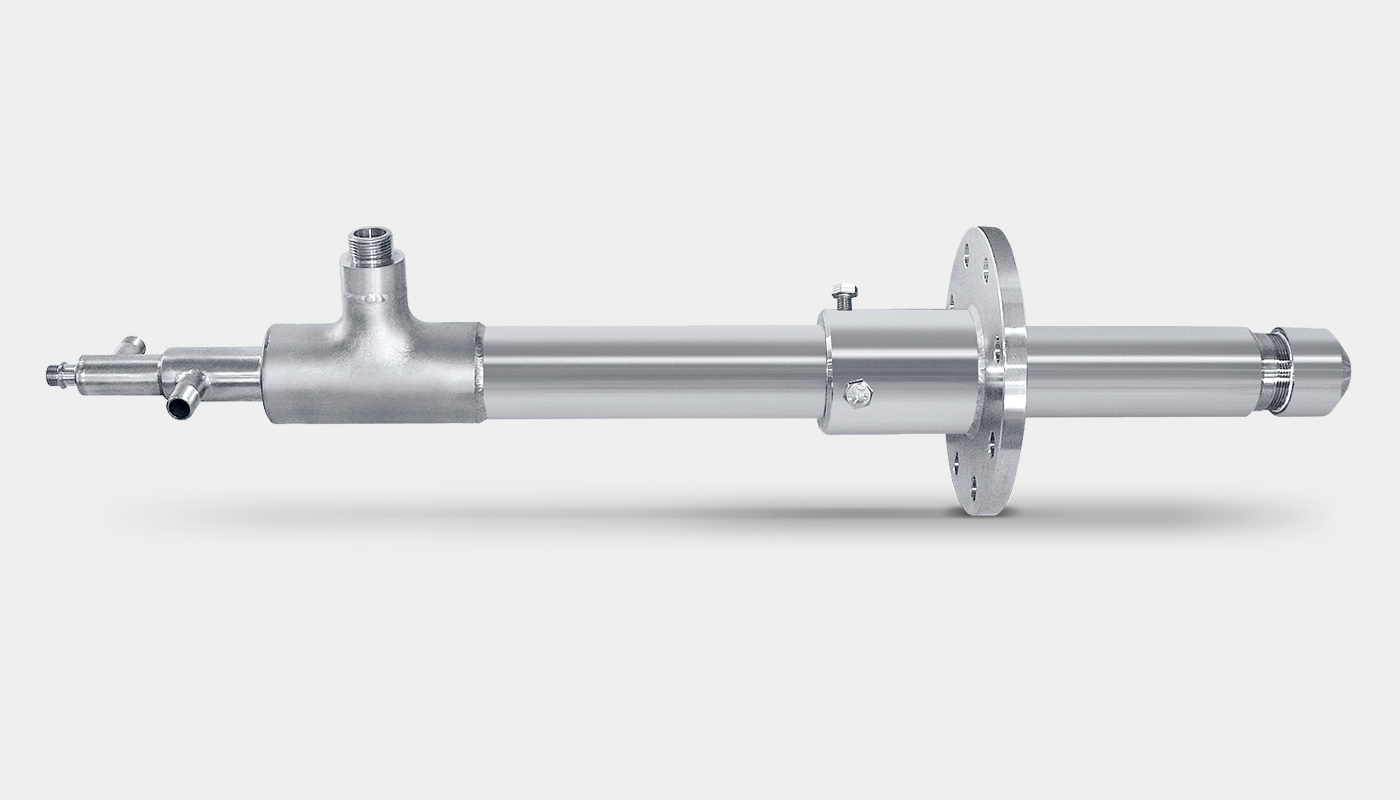
The custom design 0/5 S49 with heating or cooling jackets (isolated from the atomisation channel), with clamping and flange.
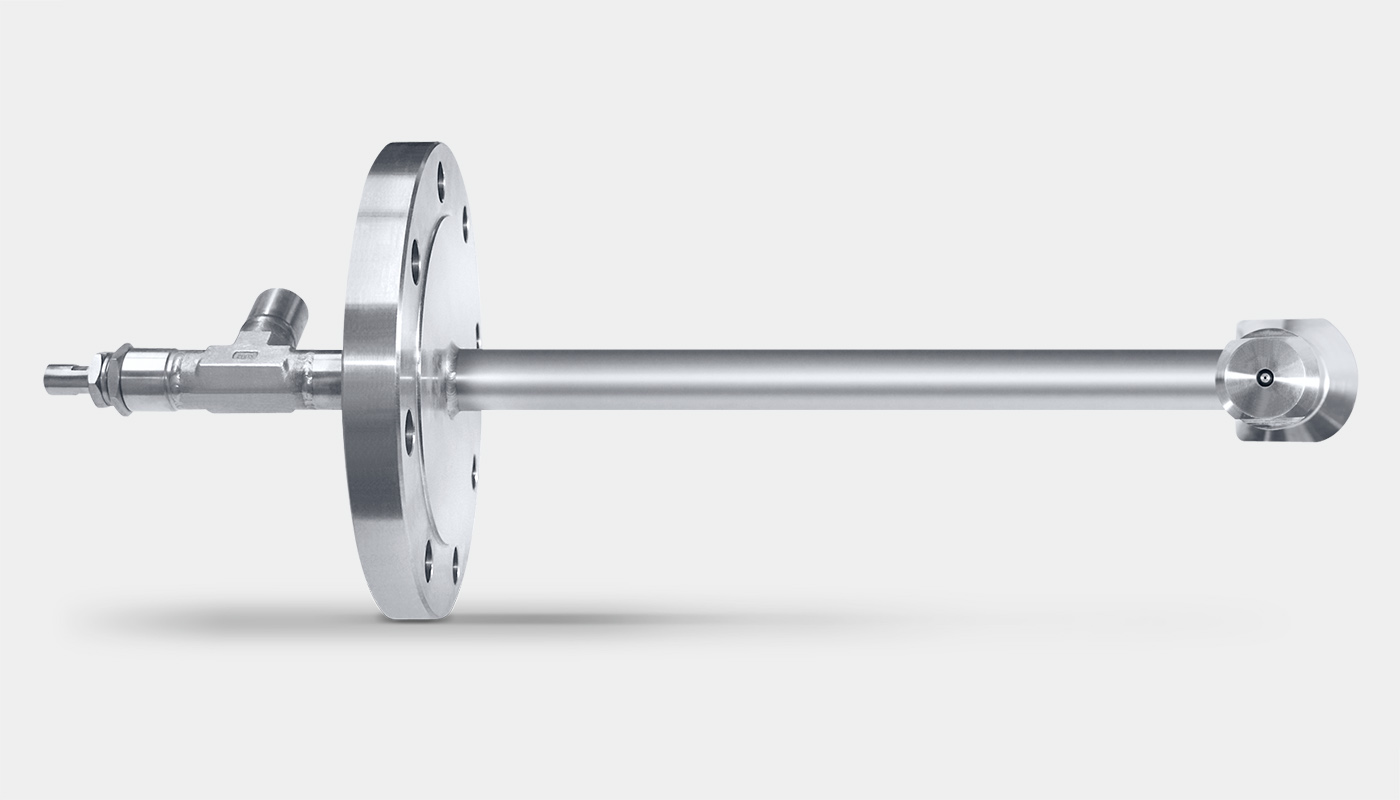
Special design of a 90° angled SCHLICK two-substance nozzle. Shaft length and flange set-up of model 0/2 S36 is based on individual customer specifications. Version with gland seal.

Brochure "SCHLICK Technology – Overview"
The product overview shows all essential things at first glance


Professional spraying is gaining much more in importance as a technique, especially in the production of MDF board, as it is a very helpful way of reducing costs while maximising quality at the same time. With its newly developed SCHLICK Blowline, Düsen-Schlick is setting new benchmarks for the widely used technique of blowline gluing.
Read moreFor decades, Düsen-Schlick has been supplying systems manufacturers and cigarette producers with process-optimised atomisation technology. Moistening and flavouring are core processes in the primary stage of tobacco processing. These are ultimately responsible for the flavour and quality of the final product. Properly measuring flavouring additives and uniformly moistening leaves and ribs ensure optimum cutting and drying properties. This also creates benefits for the downstream (secondary) stage of cigarette production.
Read moreProfessional spraying in industrial wood machining, especially the production of boards, is gaining increasingly in importance. This is not just because of the increasing cost of energy and raw materials; it is also because increasingly high demands for quality in the manufacture of wooden boards encourage the demand for suitable processes and possibilities, in order to apply liquids as homogeneously as possible onto prepared base materials.
Read moreThe SNCR and SCR procedures were developed for flue gas denitrogenation in order to meet the strict air purification requirements. Injection lances for the defined insertion of the reducing agent are an important component of both processes. These differ in their structural and procedural design depending on the application.
Read moreDuring flue gas denitrogenation, the addition of a reducing agent is used to transform nitrogen oxides into a substance that can be emitted without causing any damage or can be used again. The reducing agent ammonia is increasingly being replaced by innocuous urea. However, urea has a tendency to crystallise during atomisation. When observing the nozzle systems used in urea atomisation, it can be seen that trouble-free operation is not always guaranteed.
Read moreDue to poor or incomplete combustion of the medium, soot is produced, and at the same time the emission values in the combustion chamber increase. With liquid fuels, combustion always takes place in the gas phase: The liquid fuel is first atomised, then vaporised, mixed with air, and finally burned in the gas phase. This article shows how atomisation can be influenced by various special nozzles ...
Read more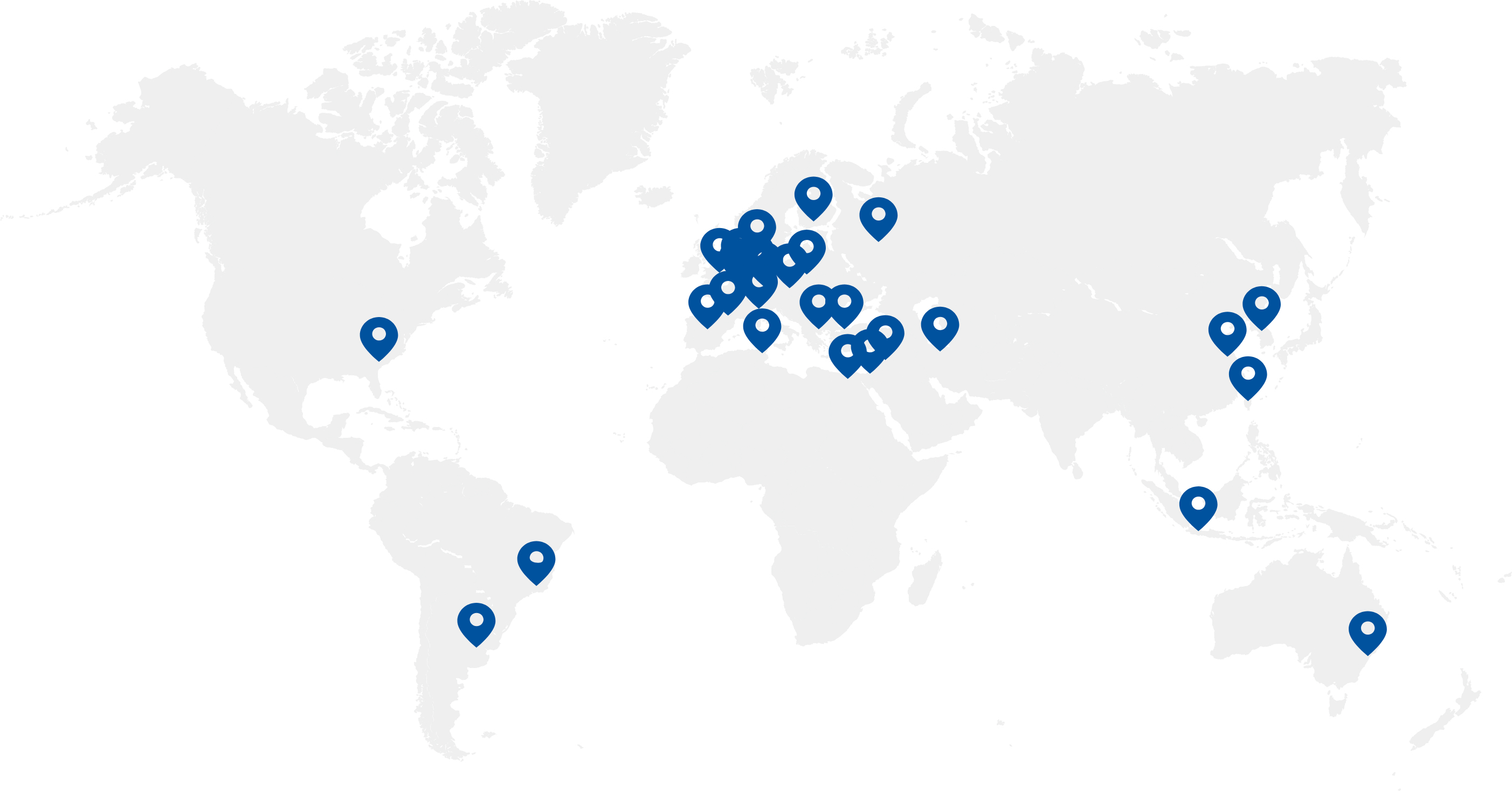
Consultation, engineering, production and testing.
At SCHLICK, you get everything from one source.
The ideal solution for your application.
Phone +49 9565 9481-0
Mail info(at)myschlick.com
Hutstraße 4 | 96253 Untersiemau/Coburg
Telefon: +49 9565 9481-0
Mail: info(at)myschlick.com

